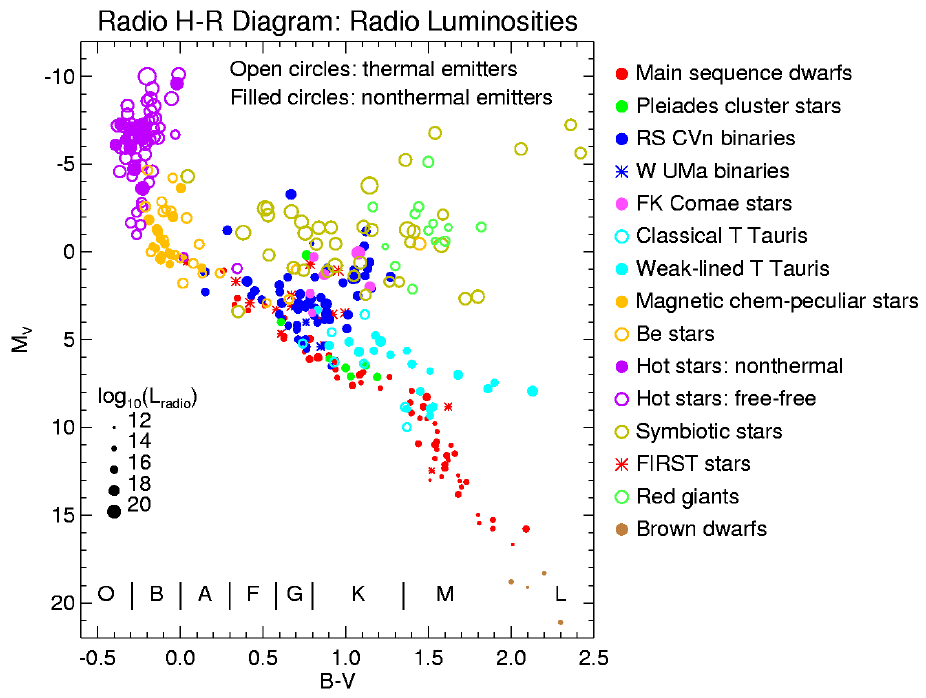
The second image is a Hertzsprung-Russell (HR) diagram for stars detected as radio sources. An HR diagram is one of the ways astronomers like to classify stars: temperature (increasing to the left) is represented on the bottom axis and intrinsic brightness is represented on the vertical axis. Thus hot bright stars appear in the upper left of this diagram and cool faint stars in the lower right.
If we put the Sun at the distance of the nearest star, we would not be able to detect it as a radio source, so the fact that so many stars are detected tells us immediately that they are doing something different from the Sun. The stars are color-coded, with the key to different types of stars given at the bottom of the image. Main sequence dwarf stars are ordinary cool stars similar to the Sun: they tend to be detected as radio sources if they are young and/or rapidly spinning. T Tauri stars are very young stars shortly after birth. The letters at the bottom of the figure show the ranges of different spectral types of stars. The filled symbols represent stars which appear to have "nonthermal coronae", that is, unlike the Sun where the outer atmosphere is mostly just heated up, in these stars the atmosphere is full of very energetic accelerated electrons which are responsible for the radio emission.